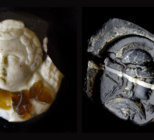The British Museum has said a major bequest by the late Sir Joseph Hotung is one of the most significant in the Museum’s history.
Hotung, who was a Trustee of the British Museum from 1994-2004, passed away in December 2021 and had already loaned a number of objects to the Museum. He was a collector, businessman and philanthropist, born in Shanghai and educated in China, the United States and the University of London.
The latest bequest adds to Hotung’s earlier donations of Chinese works of art.
Many of these were already on display in The Selwyn and Ellie Alleyne Jade Gallery, adjacent to the Sir Joseph Hotung Gallery of China and South Asia, a gallery which he endowed twice, in 1992 and twenty-five years later in 2017.
In addition to donating those items already on display, Sir Joseph has bequeathed fifteen very fine Yuan (1279-1368) and Early Ming Dynasty (1368-1644) blue-and-white porcelains and a dry lacquer head of a Bodhisattva, all of which will are to put on display in coming months.
The bequest includes 246 jades (including three new jades), fifteen rare Yuan and Early Ming Dynasty blue-and-white porcelains, 24 bronzes and other items of metalwork, a Neolithic white pottery jar as well as a dry lacquer head of a Bodhisattva.
George Osborne, Chair of the Trustees of the British Museum said Hotung “had a warm and enduring relationship with the British Museum and was amongst our most significant philanthropists.
“This is one of the most generous gifts we’ve ever received, and it means future generations will be able to enjoy these beautiful objects and learn more about the extraordinary history of China.”
Carol Michaelson, Curator Department of Asia, said: “It is rare to have a display, outside of Asia, exhibiting a comprehensive and chronological history of Chinese jade. The bequest is a result of the long and close relationship Sir Joseph had with the British Museum and further underlines his great generosity.”
Sir Joseph’s family said: “We are pleased that our father’s collections will now be viewed by the millions of visitors who pass through the Museum every year and that this important area of the world will be further represented.”










